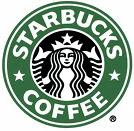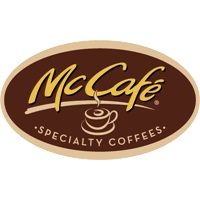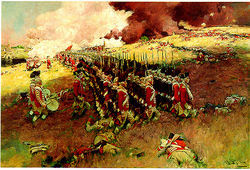LeapFrog’s business is highly seasonal, with retail customers making up a large percentage of all purchases during the back-to-school and traditional holiday seasons and although they are expanding their retail presence by selling products online as well as to electronics and office supply stores, the vast majority of U.S. sales are to a few large retailers. Net sales to Wal-Mart (including Sam’s Club), Toys “R” Us and Target accounted for approximately 70% of U.S. segment sales in 2006 compared to 80% in 2005 and 86% in 2004.
Sales in all segments declined during 2006 primarily as a result of significant reduction in the sales of LeapPad family of products whose design was overhauled. They increased their promotional activities to reduce existing FLY Pentop inventories as they plan to replace the FLY Pentop Computer with the FLY Fusion Pentop Computer in 2007. Sales of screen-based products were down slightly as retailers worked off excess inventories. Retailers’ inventories fell an estimated 40% at the end of 2006 compared to the same period last year, which also negatively impacted 2006 sales. To invigorate sales and margins, the company plans to introduce many new products in 2007, including the afore mentioned FLY Fusion PenTop Computer system, the largest launch of Leapster software titles (many of these will be licensed products through Disney (Cars, Nemo etc..). Nickelodean, and others), a ClickStart My First Computer system, and other products geared toward infants and preschool children.
The 2006 results? LeapFrog went from 28 cents a share in earnings in 2005 to a loss of $2.31 in 2006. That makes 2006 a “do over” year, meaning that new management realized the need to “do over” their main product lines and used 2006 to clear the deck. Now, it should be noted that the new team that did the deck clearing has an impressive resume. Let’s look at them:
Jeffrey G. Katz, Chief Executive Officer and President since July 2006 and as a member of the board of directors since June 2005. Mr. Katz served as the Chairman and Chief Executive Officer of Orbitz, Inc. from 2000 to 2004.
Nancy G. MacIntyre, Executive Vice President, Product, Innovation, and Marketing since February 2007. From May 2005 through January 2007, Ms. MacIntyre served on the executive team at LucasArts, a LucasFilm company, most recently as Vice President of Global Sales and Marketing. Previously, she had been with Atari, Inc as Vice President, Marketing from 2001 through 2005 and with Atari, Inc.’s predecessor Hasbro Interactive from 1998 to 2001 in senior sales and marketing positions.
Martin A. Pidel , Executive Vice President, International since January 2007. From 1997 through December 2006, he served in varying capacities with HASBRO, Inc. including key roles in Europe and the US, most recently as Vice President of International Marketing.
Michael J. Lorion , President, SchoolHouse since December 2006. Prior to that, he served at varying capacities at LeapFrog since June 2005. Prior to joining LeapFrog, Lorion served in different capacities at palmOne, Inc. from February 2000 to April 2005, most recently as Vice President, Vertical Markets Sales & Marketing.
While I expect these changes will improve performance, I would not expect them to contribute substantially until after 2007, due to the lead time associated with product development, and due to the year end seasonality that drives substantially (75%) all sales volume. So, expect a modest sales decline in 2007, improved gross margins from 2006 due to 2006 inventory reduction efforts and improved product mix and a decline in operating expenses from 2006, consistent with the decline in sales. Overall, expect a loss in 2007 but, I expect it to be significantly less than the loss for 2006.
Okay Todd, so why would we invest? A couple of reasons:
Cash:
Currently Leapfrog is sitting on over $200 million or $3.22 a share in cash. This is cash from operations since debt stands at zero, not “cash from financing”. Using our “if we were to buy the whole company” process, if we were to pay todays price of approx. $10.50 a share, we would be essentially be getting cash back of 30%, reducing our actual cost to $7.28 a share. This makes LeapFrog a potential takeover candidate in my mind but that is not a reason to invest. Now, here is where it gets interesting. By using that cash, they could in theory buy back 20 million shares of 1/3 of the company. They won’t and here is why. Just like share buybacks increase EPS when you are making money, they increase losses per share when you lose money. For instance, if you have 10 shares outstanding and lose $1 your EPS is -$.10 a share (10 divided by -$1). Now if you buy back 5 of those shares your loss per share jumps to 20 cents a share (5 divided by -$1). So, do not expect a share buy back in 2007 but, I would expect one in 2008 and this has the potential to make 2008 earnings per share to explode to the upside (that is the interesting part).
Debt:
None and the best news is none will be needed for the current plans of management. They have a $75 million line a credit that has not been tapped.
Products:
I have seen the new LeapFrog products and they are great. They are usable by my 4 year olds and are educational, not just entertaining. The quality is good, meaning they would have to work at breaking them and they are affordable. A Leapster Learning Game System in Target runs about $60 and the games are about $20-$25 a piece. Best of all, the kids really love them and they are learning (to read and write, not blow things up, it’s the little things).
Costs:
Capital expenditures for 2007 will be similar to prior years. In 2006 and 2005, capital expenditures were $20.1 million and $16.7 million. Much of the heavy R&D work on new products is done and those costs are in the 2006 results. 2007 will see the fruits of them. Account collections have been reduced from 90 to about 45 days.
Other Shareholders:
Marty Whitman who runs Third Avenue Management LLC and has one the best track record in history (disclosure: my son’s Coverdale accounts hold positions in his Value Fund ) holds 8.6 million shares (almost 14%) of the company. Marty was an early investor with Eddie Lampert in both Kmart and Sears (we know how that turned out) and still holds a large position there. It behooves us to look closely at his actions.
What To Do?
At just over $10 a share I am going to take a “Leap of faith” (pun intended). Based on the first 6 months of Mr. Katz’s reign, he is doing everything right. Keep your position small because it is a bit speculative and the payoff will most likely be a bit off down the road. It will be added to the portfolio at the price I purchased it on Monday ($10.54) and this post hit the site the Tuesday giving Enhanced Features Subscribers a day to get in early. Here is how I did it. I bought the shares on the market and then sold a Sept. 2007, $10 put. This lowered my effective purchase price by 81 cents or (7.6%). Should the price fall, this does give us some downside protection. Should the price fall below $10 and we get “put” the shares, meaning we have to buy additional shares at $10, the trade is a plus as long as shares are above $9.19, ($10 minus the .81 cents we received for selling the put). If after Sept, the share price of LF is above $10, we keep the premium and maybe do it over again. All prices are the actual trade prices.
The option will be accounted for in the portfolio at it’s sales price. Since I have no plans to “buy it back”, the only price of it that matters is the price we receive. Now, if after Sept. it is not exercised, its proceeds will be reflected in the portfolio by a reduction in our purchase price of our original shares.
Be prepared for more put selling for some of out “watch list” shares.







